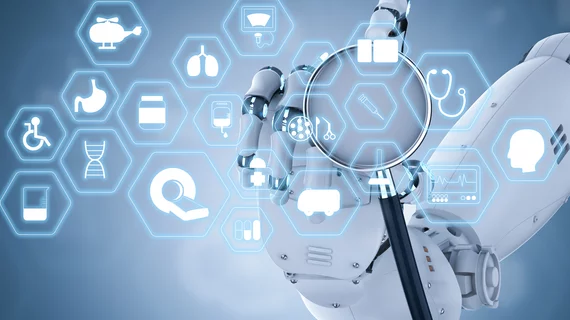AI techniques detect implantable devices, improve MRI safety
Two different AI-based methods can identify patients with implantable devices that could pose a safety risk during MRI scans, according to research published in the Journal of the American College of Radiology.
“Most MRI protocols in effect today in the United States call for surveying the patient for report of any MRI-unsafe implants,” wrote Vladimir I. Valtchinov, PhD, Brigham and Women’s hospital in Boston, and colleagues. “Although ∼90% of respondents may correctly identify the presence of such a device, the reported rate of compliance with completing an MRI safety questionnaire before imaging ranges from only 45% to 55%.”
Valtchinov et al. compared the ability of two natural language processing (NLP) approaches—an expert-derived approach and an ontology-derived approach—to identify patients with implantable devices. A total of 25,000 radiology reports, more than 174,000 emergency department notes and more than 41,000 other clinical reports were used in the study, with 155 samples from each grouping (465 cases total) being used as a validation sample.
The team’s expert-derived approach relied on “highly relevant search terms” determined by human experts to identify implantable devices. The ontology-derived approach, meanwhile, used publicly available biomedical ontologies to extract “medical concepts.”
Overall, the expert-derived approach and ontology-derived approach achieved a comparable accuracy (0.83 and 0.91, respectively) and sensitivity (0.88 and 0.96, respectively). The specificity was also comparable (0.82 and 0.92, respectively), but “ontology-driven NLP had slightly higher specificity for implantable devise with relative contra-indications.”
“Our study supports the notion that ontology-driven NLP may be a suitable and effective alternative for expert-driven NLP in targeted clinical data retrieval tasks,” the authors wrote.
Valtchinov and colleagues noted that additional research in this area could prove helpful for healthcare providers.
“Further studies using automated approaches for retrieving reports with implantable devices that pose a safety risk for patients undergoing MRI might be appropriate,” the authors wrote. “In a clinical workflow when an MR imaging is ordered, a trigger to analyze clinical records before the examination would be helpful to inform providers and patients about potential safety risks. This step could be added either before patient arrival or right before an examination.”

